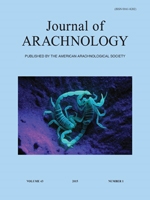Predators can affect prey indirectly by eliciting changes in behavior, morphology, and life history. These nonconsumptive effects are often mediated by predator cues used by prey to avoid capture. However, predator cues can cause stress responses in prey that negatively impact survival and reproduction. We explored responses of the wolf spider Pardosa milvina (Hentz 1844) to cues from the larger wolf spider Tigrosa helluo (Walckenaer 1837) and the ground beetle Scarites quadriceps Chaudoir 1843. We exposed Pardosa to cues from both predators and measured changes in body size, weight, consumption, and lifespan. We found significant effects of predator cues only on female longevity: females exposed to Tigrosa cues had shorter lifespans than those exposed to cues from Scarites. The lack of treatment effects on energy intake suggests that predator cues act through physiological pathways. Future experiments may uncover opposing hormonal mechanisms underlying the observed differences in lifespan.
How to translate text using browser tools
1 April 2015
Predator cues have contrasting effects on lifespan of Pardosa milvina (Araneae: Lycosidae)
Michael I. Sitvarin,
Kelsey Breen,
Ann L. Rypstra
ACCESS THE FULL ARTICLE

The Journal of Arachnology
Vol. 43 • No. 1
April 2015
Vol. 43 • No. 1
April 2015
foraging
Nonconsumptive effects
predation
Scarites quadriceps
Tigrosa helluo




